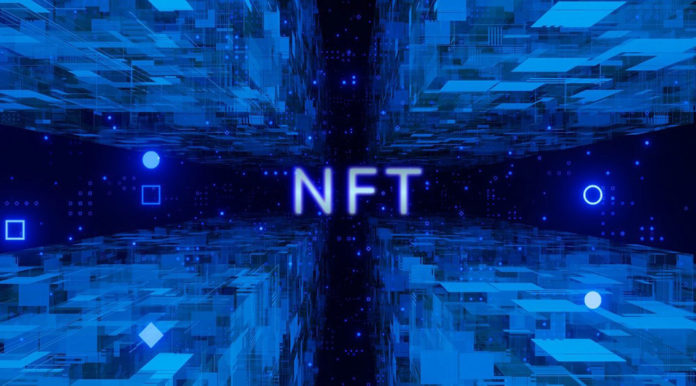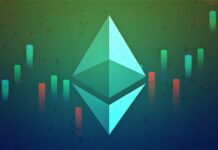Over the last few years, one term appeared in the design world – NFT art. Well, it’s not a coincidence why we saw a rapid increase of the artists that come up with NFT design projects – after all, it’s a very good way to earn extra money and feel appreciated in this market where people don’t really value non-exceptional artists, and we have to agree that not everyone is Banksy.
In this article, we will see what the future holds for NFTs, how to create NFT, and even how to find a relevant NFT marketplace to sell your designs.
What is NFT?
Non-fungible tokens are a new digital asset form that features unique characteristics, unlike something fungible like bitcoin or ether. With special characteristics encoded on the blockchain, non-fungible tokens can be used to represent real-world assets — like a piece of art, an in-game item, or even a tweet (Jack Dorsey’s, Twitter’s co-founder, got his first tweet sold for just under $3 million)
How are NFTs different from other pieces of art?
Unlike traditional art, NFTs cannot be bought via fiat currencies. So how to buy NFT? It’s easy. One should have an Ethereum wallet which they could use for the purchase. At the moment, purchasing NFT is made through Ethereum. So if you only have a Dogecoin wallet, you can create another one for Ethereum.
Once they have a sufficient amount in their account, they can purchase any NFT they want. Since NFTs are stored in the blockchain, there isn’t a problem with the location of the seller and buyer, time zones, etc. Artists can sell their NFT pictures and even NFT games.
NFT marketplaces
We cannot skip NFT marketplaces. They are liberal, decentralized marketplaces where everyone can trade in and out their tokens. Of course, speculation can bring traders a lot of money, but they can easily fall into one of the traps of playing with cryptocurrency, which is the foundation of non-fungible tokens.
Most popular marketplaces
- OpenSea – OpenSea has become the go-to marketplace for NFT collectors. With varied tokens available, it is the ideal resource for all users seeking to expand their collection and gain access to new assets. In addition, the site supports artists and creators by providing them with a platform to showcase new tokens, which is free to use for both them and their buyers. It has a 2.5% selling fee, plus a maximum of 10% royalties which is decent.
- Rarible – Rarible is a marketplace for all sorts of unique digital goods. Artists can sell their pieces, collectors find rare treasures, and observers can engage with and appreciate new works of art. Rarible is working to revolutionize the blockchain industry by innovating on the concept of non-fungibility — generating so much value that people will have to come running. It has 2.5% sales fees but there is a generous royalty for creators which can reach up to 30%.
- SuperRare – SuperRare is a decentralized platform for artists, collectors, and content creators. The community-owned marketplace supports unique digital goods that are scarce, like digital art or music files. But unlike other platforms, anyone can submit or request digital works — allowing any creator to have a shot at success without going through a third party. It has a hefty 15% commission fee and artists can have up to 10% in royalties.
What is the future of NFTs?
Okay, we already know what NFT is and the most popular marketplaces to sell digital art. But what are the predictions for non-fungible tokens? Let’s find out.
Liberation of Art
Art is being democratized through both blockchain and digital (NFT) technology. Blockchain allows artists to be supported by their audiences and control their own careers. Digital art (through NFTs) is on the rise, allowing anyone and everyone to get involved in something that was once the sole domain of galleries and museums.
Before NFTs, it was a “mission impossible” for normal artists to share their masterpieces simply because they are just not popular among patrons. This means they would often feel isolated and pressured to work something else to make a living. Not anymore!
Representation for everyone – diversity
Art is for everyone. The digitization of art, blockchain technology and non-fungible tokens will open new doors for artists and collectors alike, by making art more representative of the world around us. This shift in representation means that all types of artists will have a chance to be heard and appreciated, regardless of their background or experience.
Reaching wider audience
Art is one of humanity’s most rewarding experiences, but it was restricted to those who could afford it. Now, with the introduction of non-fungible tokens (NFTs), people from all walks of life have an equal opportunity to own and appreciate art. Art has always been a territory for the upper classes, but with the introduction of NFTs, anyone can own an artwork and become a part of a project.
NFTs create a connection between artist and patron
Non-fungible token art is not just about creating images. It’s about creating a community where everyone feels like they belong to something bigger. NFT art is a movement that encourages creatives to think about social change, not just producing unique or innovative designs. By thinking about the cultural impact of their craft, NFT artists hope to inspire others to reflect on larger social issues they may have never considered before.
Pollution
There are large concerns about NFTs and pollution. However, with the introduction of Ethereum 2.0, the carbon footprint of the blockchain network will be reduced by up to 99.5%. Many new blockchains are starting to move on from the Proof of Work consensus method towards more ecologically oriented ones, like Proof of Stake. In the near future, we can see a stable network of artists that can produce sustainable pieces of art.
Summary
Non-fungible tokens are a growing trend in the crypto space, and they’re bringing with them a new way of working. Instead of one-off art pieces, NFTs allow buyers to become part of an emerging community — one that is shaped and led by the individuals within it. These communities help founders and artists spread their voice to a wider audience, while connecting people through shared beliefs and interests.
Credit: Source link






















 Bitcoin
Bitcoin  Ethereum
Ethereum  Tether
Tether  Solana
Solana  USDC
USDC  Lido Staked Ether
Lido Staked Ether  XRP
XRP  Dogecoin
Dogecoin  Toncoin
Toncoin  Cardano
Cardano  Shiba Inu
Shiba Inu  Avalanche
Avalanche  Wrapped Bitcoin
Wrapped Bitcoin  TRON
TRON  Bitcoin Cash
Bitcoin Cash  Polkadot
Polkadot  Chainlink
Chainlink  Internet Computer
Internet Computer  Polygon
Polygon  NEAR Protocol
NEAR Protocol  Litecoin
Litecoin  Uniswap
Uniswap  LEO Token
LEO Token  Dai
Dai  Aptos
Aptos  Ethereum Classic
Ethereum Classic  Mantle
Mantle  First Digital USD
First Digital USD  Stacks
Stacks  Filecoin
Filecoin  Cronos
Cronos  Stellar
Stellar  OKB
OKB  Cosmos Hub
Cosmos Hub  Render
Render  Renzo Restaked ETH
Renzo Restaked ETH  Arbitrum
Arbitrum  Bittensor
Bittensor  Immutable
Immutable  Hedera
Hedera  dogwifhat
dogwifhat  Maker
Maker  The Graph
The Graph  Injective
Injective  Optimism
Optimism  Ethena USDe
Ethena USDe  Fetch.ai
Fetch.ai 
